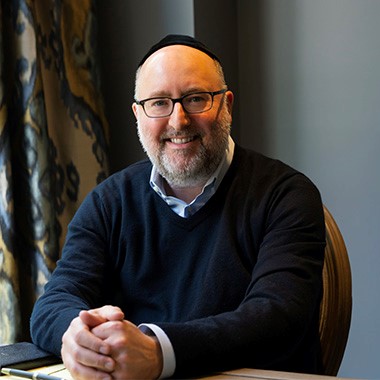
If you ask most people what differentiates a righteous person from an evil person, more often than not, they will say to look at the person’s actions. Somebody who shares with others, volunteers, and makes all the spiritual connections is a righteous person, while a person who harms other people and does negative things is an evil one. According to Rav Ashlag in Ten Luminous Emanations, however, this is actually the wrong way to look at it.
"If a person looks around the world and sees everything as perfect, then he is also perfect."
Rav Ashlag explains that we cannot distinguish someone who is completely connected to the Light of the Creator from someone who is completely disconnected simply by looking at what they do. The only thing that determines whether a person is connected or not is how he views the world. If a person looks around the world and sees everything as perfect, then he is also perfect. A person who sees darkness in the world is someone who is disconnected. The connection to the Light of the Creator is not in our actions, but in our perception of the Light of the Creator.
This is a revolutionary idea that Rav Ashlag teaches us. In order to be truly connected, we must understand that everything we experience comes from the Light of the Creator, even the things we think of as ’negative.’ There is nothing in our world that isn’t meant to assist us in our spiritual work. The challenges we experience and the difficult people we encounter are all part of our process of transformation. Even the actions we think of as ‘negative,’ whether made by ourselves or others, are a part of that process. When we lose sight of this, that is when we disconnect from the Light of the Creator. Therefore, a righteous person (a tzadik) is someone who sees the Light in everything, while a disconnected person (a rasha) is someone who sees only darkness around them.
"What do we see in the world?"
Most of us fall somewhere in between these extremes, but Rav Ashlag explains that we are meant to eventually come to the point where we see the goodness of everything. This is the purpose of our spiritual work and the yardstick we use to judge our spiritual growth. When we find ourselves seeing negativity around us, whether it be in other people or in our environment, it is an indication that we are disconnected to some degree from the Light of the Creator.
Imagine that there is a room with big windows to let in the light. When the sun shines, it illuminates the whole room. When the sun goes down, the room becomes dark. Most people see two different realities: one where the sun is shining and one where it isn’t. But the room doesn’t actually change – it is not influenced by whether or not the light is shining in. Though we sometimes cannot perceive the Light of the Creator, and things may appear dark in our lives, it is our work to not let it affect our consciousness. A person can be in a place of complete lack, but if his consciousness is of perfection, then he is perfect. Where our consciousness is affects our connection, not what is happening around us.
This is the question we have to ask ourselves: what do we see in the world? Do we see only perfection, only good people, and only the Light of the Creator? Unfortunately, most of us aren’t quite there yet. But if we want to know what the ultimate level of connection is and what makes a righteous person, it is the ability to see only righteousness in the world. That should hopefully inspire us to put in the work of transforming our perception and opening our eyes to see the Light of the Creator in all things.
*Adapted from Michael Berg’s Ten Luminous Emanations, lesson 39.